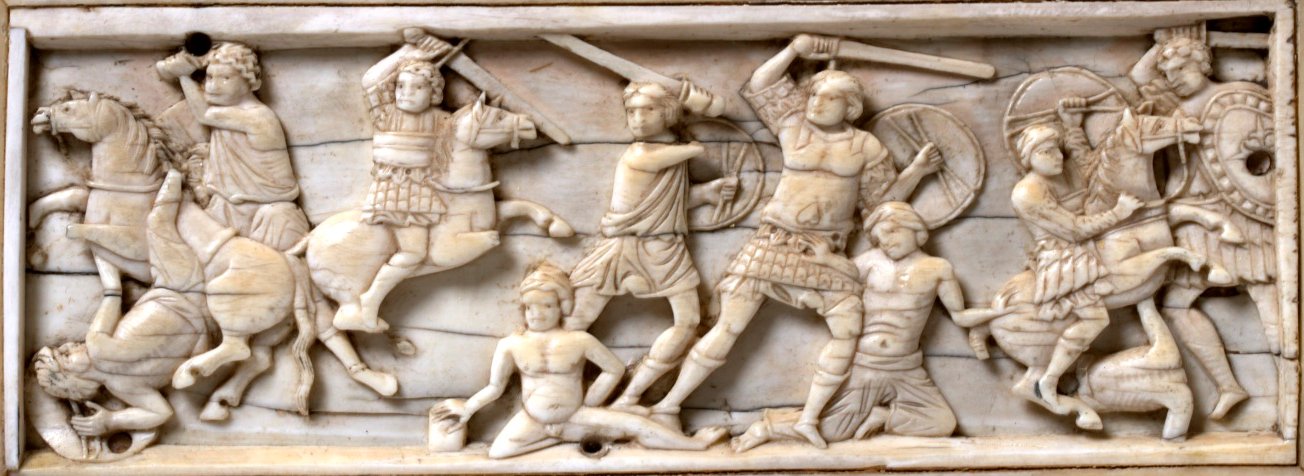
Create an Amazon Business Account
Top of a Byzantine Ivory Casket, early 11th Century
Victoria and Albert Museum 247:1, 2-1865



Casket
Place of origin: Constantinople (made)
Date: early 11th century (made)
Artist/Maker: Unknown
Materials and Techniques: Ivory and bone plaques on a wood core
Dimensions: Height: 16.5 cm, Length: 24.9 cm at base, Length: 19.5 cm at top of lid, Width: 16.4 cm at base, Width: 10.6 cm at top of lid
Museum number: 247:1, 2-1865
This is a Byzantine casket made in the early 11th century. The casket is made in ivory and overlaid with bone plaques. The bone plaques depict warriors and combats and on the top of the lid is an ivory panel with a battle scene in higher relief.
Victoria and Albert Museum
Referenced on p.22, MAA - 247 - D.Nicolle, A.McBride - Romano Byzantine Armies 4th-9th Centuries
Panel showing 'Defeat of Ai by the Israelites' on a Byzantine carved ivory box, 8th-10th centuries. Only the defeated wear turbans, which suggests the artist identified the troops of Ai with the Muslims, the Hebrews with the Byzantines. The latter have archaic cuirasses or loose tunics with one arm bared, round shields with a large horizontal grip, and long broad but non-tapering swords.
The cavalryman holding his shield above his head is referenced as figure 198 in The military technology of classical Islam by D Nicolle
198. Ivory box, Defeated warriors of Ai (?), 8th to 10th centuries AD, Byzantine, Victoria and Albert Museum no. 247.1865 (Gol).
p.231. Illustrated sources can, of course, rarely indicate the precise structure of a large round shield. They do, however, show that a great many designs were used. Some had a single central boss, others four smaller bosses that clearly held interior straps or grips. Yet others had no visible bosses at all. A few even seem to have been given decoratively scalloped edges, although shields such as these may have been of cane or reeds (Figs. 19, 20, 76, 127, 146, 163, 166, 196, 198, 218, 220B, 221, 230, 243, 257, 262, 289, 330, 387, 390, 392, 412, 420, 421, 422, 425, 454, 502, 515, 518, 531, 536, 537, 543, 580, 581, 598, 606 and 623). An oval style of shield also seems to have persisted in some areas. Perhaps it was directly related to a similar late-Roman form, while it might also have been the style from which the later kite-shaped shield developed (Figs. 123, 190A, 196, 212, 220A, 257, 354, 504, 508, 531, 543 and 564).